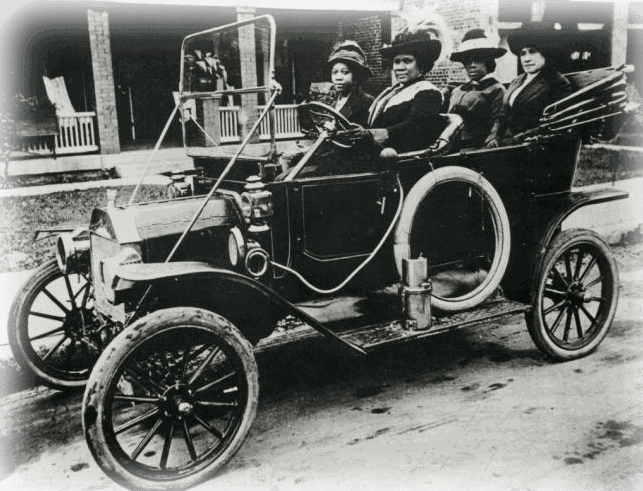The story of Madam C.J. Walker is not only inspirational, it is timeless. She overcame many personal struggles, driven by her powerful entrepreneurial spirit. Surrounded by a male-dominated business world, Madam Walker had a passion for sharing her talents with other women, and she proudly trained thousands of women to grow successful businesses.

Born on a Plantation
Born Sarah Breedlove on December 23, 1867, her parents, Owen and Minerva, were recently freed slaves. They lived near Delta, Louisiana on Robert W. Burney’s Madison Parish plantation. She had five other siblings including an older sister, Louvinia, and four brothers, Alexander, James, Solomon, and Owen Jr.
Sarah was the first of her siblings born into freedom from slavery thanks to the Emancipation Proclamation. Her mother passed away in 1875, and her father followed just a short while after. Sarah was at the tender age of seven when she became an orphan.
Her older sister, who was married to a man named Jesse Powell, allowed Sarah to stay with them. The trio moved to Vicksburg, Mississippi in 1877. Sarah picked cotton and did household work.
As a young teen, Sarah fled from her environment, fed up with the child labor she was forced to perform, and mistreatment from her brother-in-law.

Married with Child
Sarah married her first husband, Moses McWilliams, at the age of 14. The marriage bore a beloved daughter, Lelia McWilliams, on June 6, 1885. Sadly, Moses died just two years later when Sarah was 20 years old. She and her daughter moved from Mississippi to St. Louis, Missouri to live closer to her brothers, who had established their careers as barbers.
Sarah earned about $1.50 per day as a washerwoman. It was enough to send her daughter to a public school for a good education. She also saved money to take night classes. She was eager to continue learning and gaining knowledge. Throughout the 1880s, Sarah sang at the St. Paul African Methodist Episcopal Church when ragtime music developed in her community.
Problems with Hair
It was not uncommon for women during this era, including Sarah, to suffer from severe dandruff, baldness, and other scalp and skin ailments. Harsh chemicals such as lye in soaps for cleaning hair and washing clothes took a toll on hair and skin. Women suffered from hair loss for other reasons, too, including poor diet, sickness, and bad hygiene.
Sarah had lost much of her hair due to a scalp disorder in the 1890s. Because her brothers were skilled barbers, Sarah learned about hair care from her family. She experimented with both store-bought hair care products and home remedies.
At the turn of the century, Sarah became a commission agent and sold hair products for established entrepreneurs like Annie Turnbo Malone, an African-American woman and the owner of the Poro Company. Years later, Annie Turnbo Malone would become one of Madam C.J. Walker’s biggest competitors.
In 1905, Sarah moved to Denver, Colorado to continue selling products for Annie Turnbo Malone. By now she was 35 years old and was working on a personal hair treatment of her own. It was only a side project at first, but would soon grow into something much bigger.
Just a year later, Sarah wed Charles J. Walker. He was a newspaper advertising salesman she knew from Missouri. Her supportive husband, who was also her business partner, helped Sarah create newspaper advertisements for her own hair care products that she had been perfecting over the years.

Her husband advised Sarah to use the Walker name to become more recognizable. She promoted herself as an independent hairdresser and sold cosmetic creams door-to-door. This also gave her the opportunity to teach other women how to groom and style African-American hair.
Sarah Breedlove famously became known as Madam C.J. Walker, which turned into a household name. Her daughter Lelia, who still went by McWilliams, officially changed her last name to match her mother’s. From then on, she went by A’Lelia Walker.
While still in Denver, A’Lelia Walker was in charge of the mail order operation. This allowed Mr. and Mrs. Walker to travel throughout the southern and eastern U.S. to expand their business.

